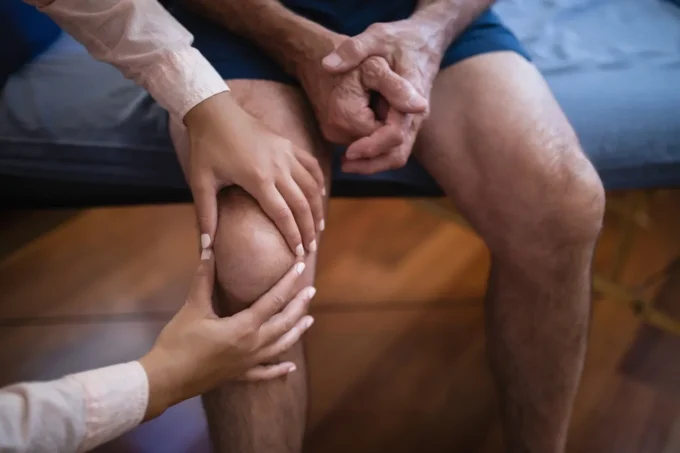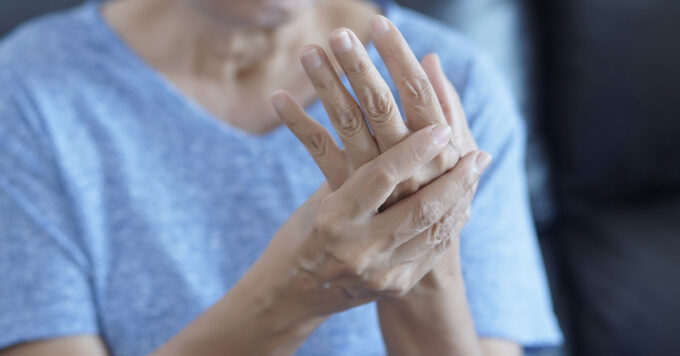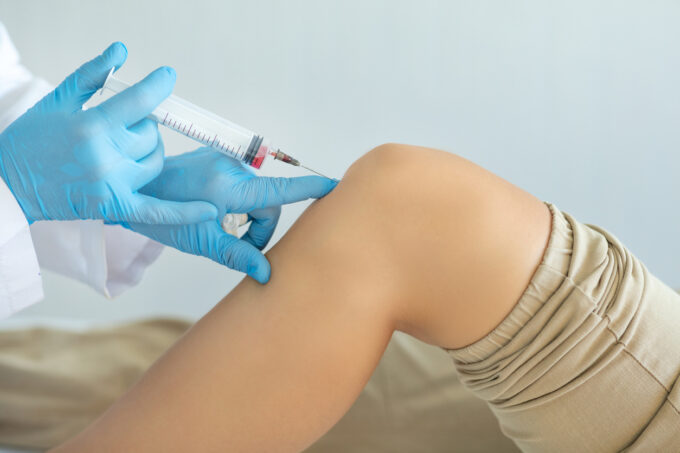Two truths apply to aging, the first one being it is unavoidable. The second is our health will get progressively worse as we get older. For many people, one of the early signs of getting older is suffering from chronic joint pain. To get a sense of just how prevalent joint pain is in the U.S., we need only look at a study published by the Centers for Disease Control and Prevention (CDC).
According to researchers, 1 in 4 adults struggle with stiff joints and chronic joint pain. Many of these same people are living with joint pain that is so severe it keeps them from enjoying regular day-to-day activities, such as exercising and completing chores around their house. That said, older adults suffering through life with joint pain are doing so because they have been diagnosed with osteoarthritis, which, by the way, is the most common form of arthritis among older adults, notes a study from the National Institutes of Health (NIH).
Additional Factors That Can Contribute to Joint Pain

Source: thehomephysios.com
Although osteoarthritis is the primary contributor to joint pain, it is not the only one. Rheumatoid arthritis, an autoimmune disease that causes the immune system to attack varying joints in the body, sports injuries, and run-of-the-mill sprains can also cause joint pain, irrespective of an individual’s age. Since we are on the topic, it is worth noting that rheumatoid arthritis is almost as prevalent in the U.S. as osteoarthritis, with some 1.3 million people reportedly diagnosed with it.
As far as sports injuries and sprains, ankle injuries are the main contributors when it comes to joint pain. And many of those injuries involve a sprained joint, which can happen while running on a playing field or while taking a leisurely walk. In addition to sprains, rheumatoid arthritis, and osteoarthritis, the following can also contribute to joint pain:
- Thyroid problems
- Fibromyalgia
- Tendinitis
- Bursitis
- Ligament tears
- Tendon tears
- Fibromyalgia
- Lyme disease
Why Joint Damage Heals Slowly or Does Not Heal at All
How quickly or slowly joint damage, and the associated pain, heals largely depends on what caused it in the first place. For example, rheumatoid arthritis and the resulting joint damage is incurable. There are, however, treatments that can provide individuals with the autoimmune disorder some relief from pain. The same applies to osteoarthritis insofar as there is no cure for this condition, which occurs due to the gradual deterioration of the cartilage that usually cushions the ends of bones in one’s joints.
Joint pain brought on by a sprain is different in that the pain and any damage to the joint itself will eventually heal, but it can take quite some time. Studies show mild sprains and associated joint pain can heal within 7 to 10 days. When it comes to severe sprains accompanied by joint pain, on the other hand, healing time can be months long.
Proven Treatments That Can Help Soothe Painful Joints

Source: hss.edu
For those with aching, painful joints caused by osteoarthritis or rheumatoid arthritis, prescription drugs can help keep pain at bay and even improve overall mobility, some of which include the following:
- Cortisone injections
- Prescription-strength pain relievers
- Counterirritants
- Disease-modifying antirheumatic drugs (DMARDs)
Physical therapy and over-the-counter pain relievers can help ease joint pain caused by mild or severe strain. Rest, ice, compression, and elevation (RICE) can also help. Studies show that this at-home treatment reduces inflammation and swelling caused by mild and severe sprains.
Platelet-Rich Plasma Injections: A Possible Breakthrough Treatment for Those Struggling With Joint Pain
For those living with incurable osteoarthritis or rheumatoid arthritis, platelet-rich plasma injections (PRP) might be a godsend, say many researchers and rheumatologists. The same is true for those suffering from joint pain caused by a severe sprain that would have otherwise left them sidelined from life for several weeks or months.
PRP injections are a step up from routine corticosteroid injections in terms of what they offer to individuals struggling with joint pain. PRP injections are platelets extracted from an individual’s blood and injected directly into damaged tendons, ligaments, muscles, and joints to help them heal faster. In individuals with osteoarthritis or rheumatoid arthritis with permanently damaged tendons, ligaments, muscles, joints, or all of the above, PRP can help undo that damage, according to the same researchers and rheumatologists.
If you are an individual seeking this type of treatment, please note that it is not approved by the FDA yet. So seek an orthopedic practice that has a lot of experience in this field, like Integrated Orthopedics, prior to making a decision on whether or not the procedure is right for you.
How Do Platelet-Rich Plasma Injections Work?

Source: allstarorthopedic.com
While the exact mechanics behind PRP injections are not fully understood, researchers and scientists say it works wonders for those living with joint pain. They say platelet-rich plasma from a patient’s blood is rich in growth factors, which play a crucial role in reducing healing time, relieving pain, and stimulating tissue growth. But it does not end there. According to a study published by the Hospital for Special Surgery, a New York City hospital specializing in orthopedic surgery and the treatment of rheumatologic conditions, PRP injections contribute to the following in the treatment of individuals suffering from joint pain:
- Reduces the need for over-the-counter or prescription-based anti-inflammatory drugs
- Reduces the need for highly addictive opioids
- All but eliminates the need for surgery to reduce pain and improve mobility
Along with these positive benefits, studies from the HSS show a patient’s body is unlikely to reject or respond adversely to PRP injections since they contain platelets taken from and returned to their body.
All told, PRP injections do look promising. However, researchers caution that more studies are needed to evaluate the long-term effects of this treatment modality and how good it is at rebuilding damaged tissue, especially among individuals with osteoarthritis or rheumatoid arthritis.







